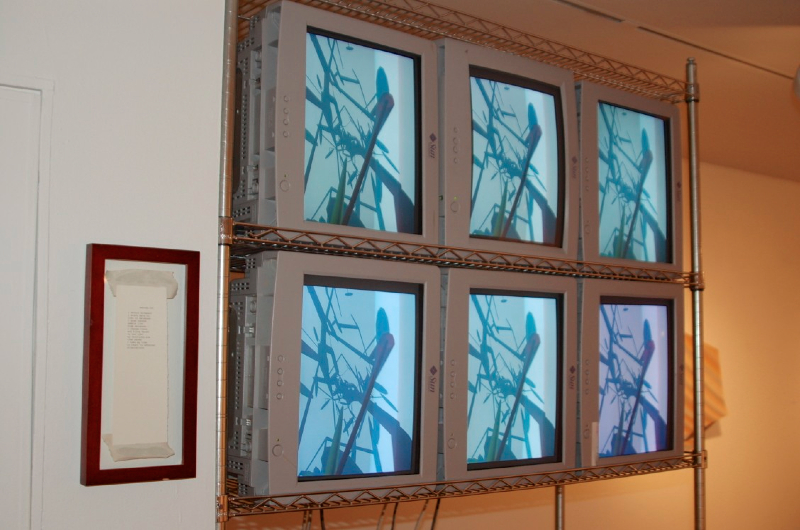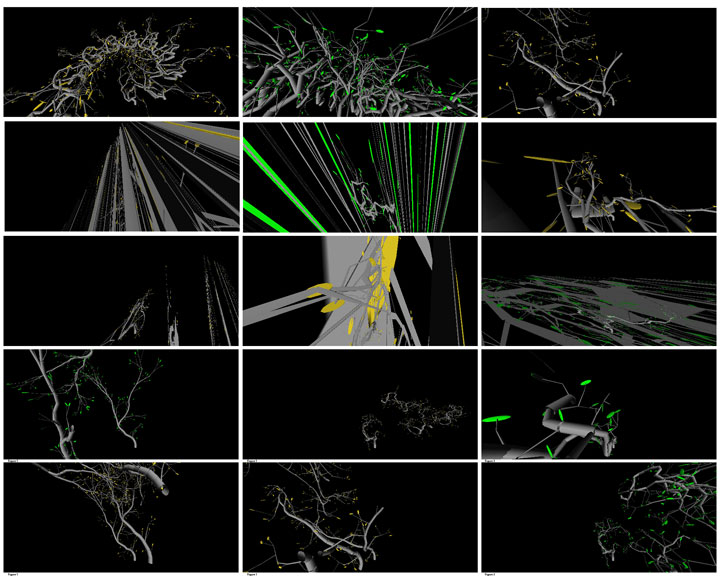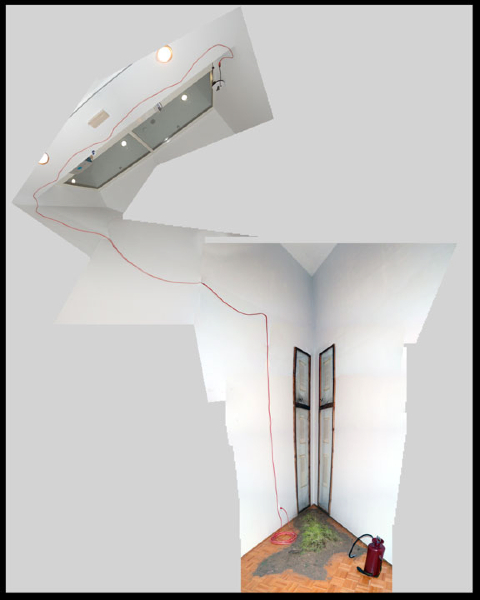edge-effects 2007
dirt, wheat grass, webcam, sensors, puredata, projector glass, paper, mixed media
interactive & site installation October 16th – November 16th 2007 @ Hartnett Gallery, Rochester, NY
_
_
On several (8) 17″ monitors are virtual representations of “Trees”. These “trees” are constructed electronically utilizing the rule based properties of L-systems or Lindenmayer systems. An L-system is a set of rule based grammars primarily used in the morphology of organisms but mainly growth processes of plant development. In this installation, growing trees are manipulated in real-time based on external stimulations. An observers motions are interactive with the virtual growth of the trees as his/her motions are transformed into electronic information. This motion are also in the form of external environmental stimulations that are harvested through sensor technologies wither localized (gallery) or globalized. In the case of global stimulations the “tree” is affected from external locations using real-time data-flows through the Internet (networks) to control growth and movement.
The tree movements contain a variety of states. The first state is a growth state where the tree transforms itself from a simple grass like structure containing relatively few rules (a single stalk) to something more complex such as a tree with many branches and leaves. The second state is the state of replication where the tree replicates itself (meme) creates multiple instance from its previous singular state. The third state is the state of folding where conceptually, drawing from the theories and philosophy of Gille Deleuze, the trees will fold in on themselves becoming an “infinite division of matter” (Deleuze ATP 1993 p.5). To this effect we see visual examples of massive compressive forces descending upon “virtual” organic matter creating a fertile platform for new architectural structures to emerge.
In addition to “tree”, the projection of “flies” will demonstrate through a virtual responsive model the concept of “the swarm”. Unlike the “tree” which may represent centralized and classification structures, “the swarm” acts more like a decentralized network where the “center” is always present but “the swarm” state is never static. “The swarm” state is always in motion and is affected by interactions. In this particular installation projection, participants will view “flies” swarming as a natural state until the user proximity becomes too close resulting in the disturbance of the swarm. When the user steps back the swarm will then converge again to swarm from its center mark. This is representative of a swarm of flies that break up in reaction to a body entering the swarms defined area. This virtual swarm will be projected against a wall near the ceiling of the gallery and coupled with a web camera to control the swarm interactions based on motion detection.
_





